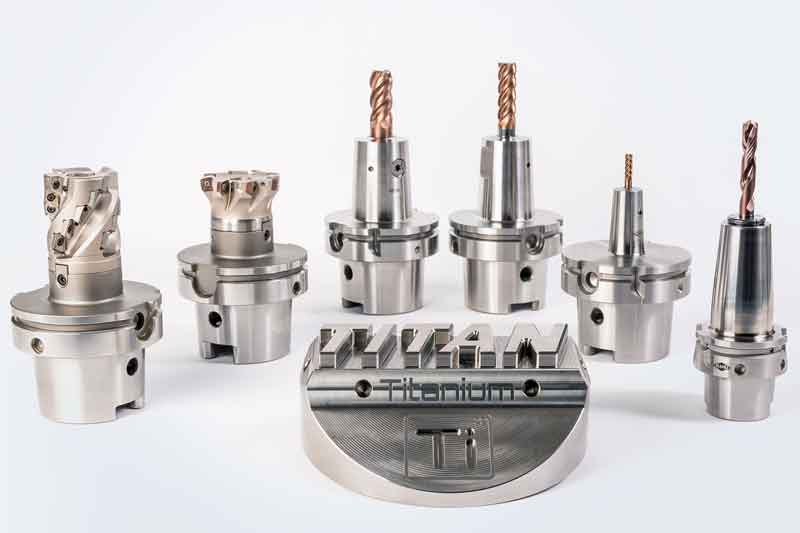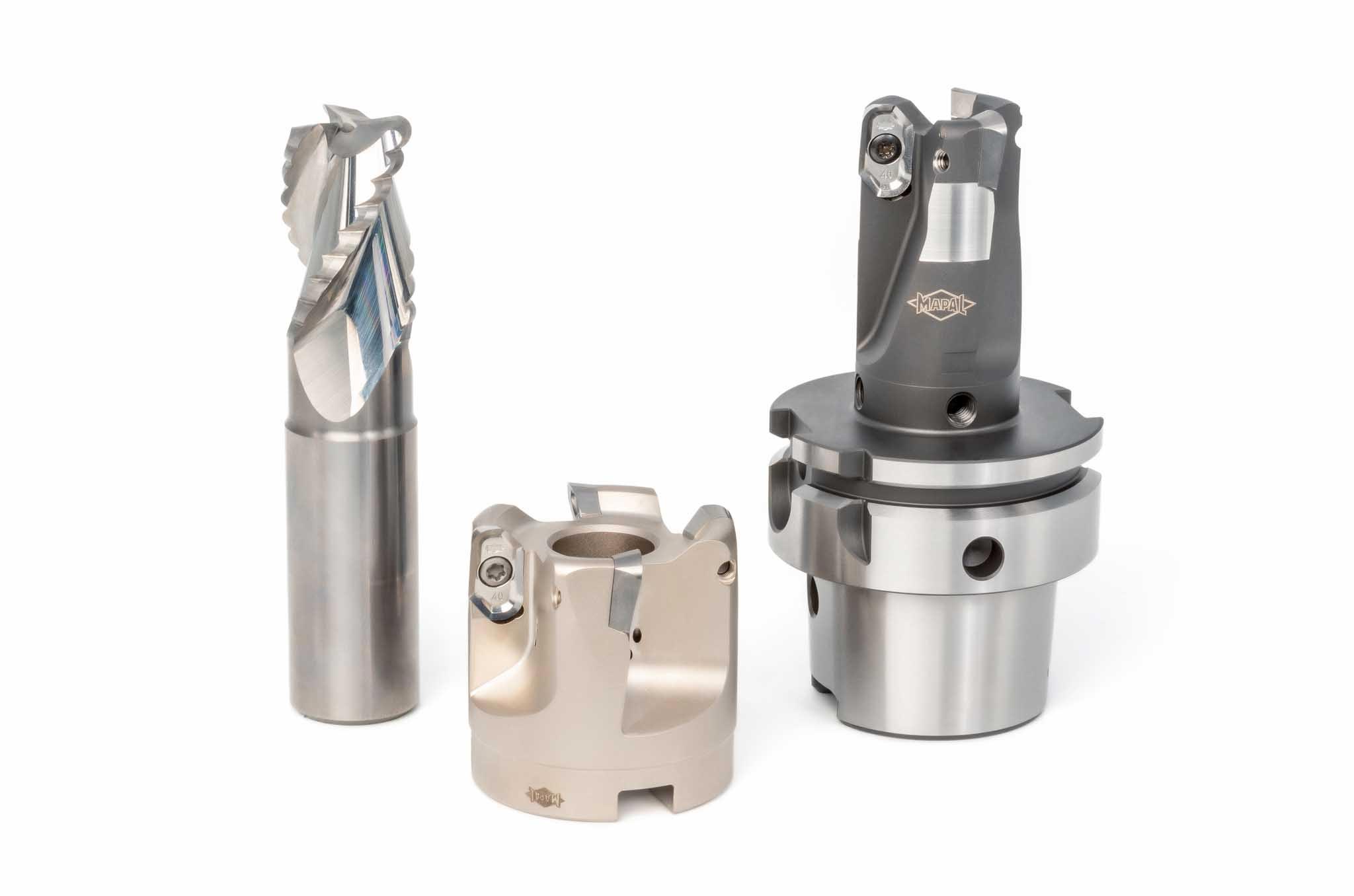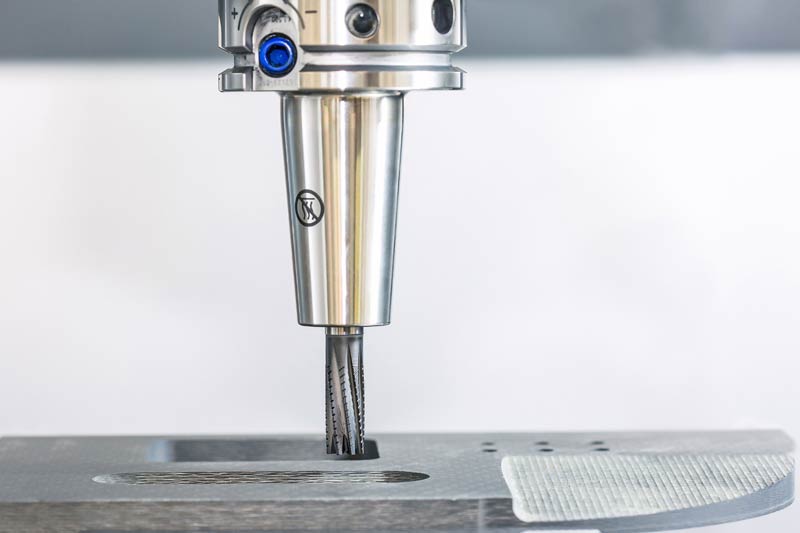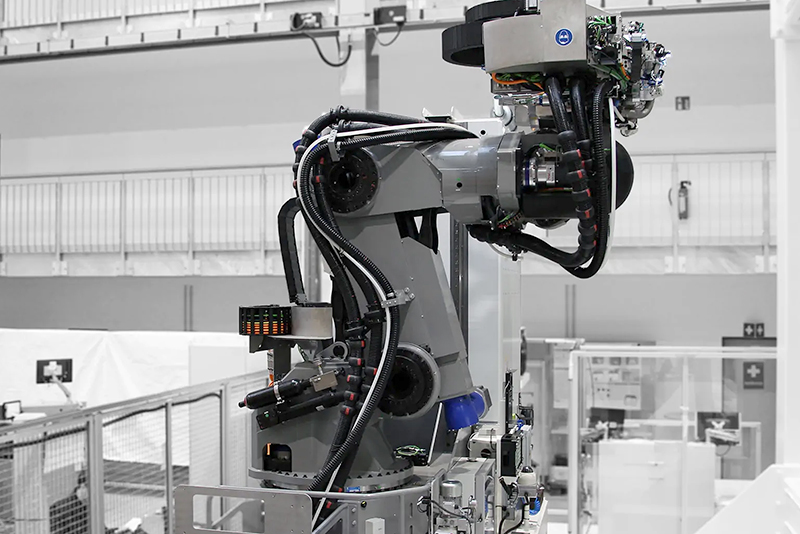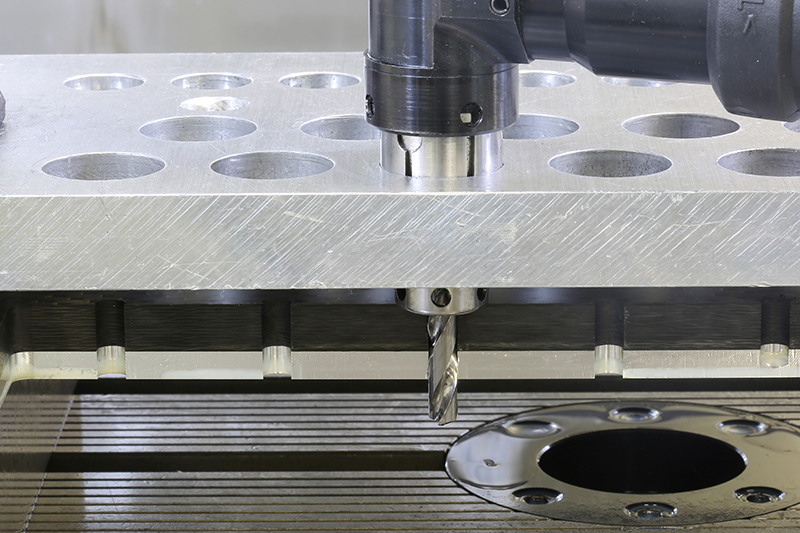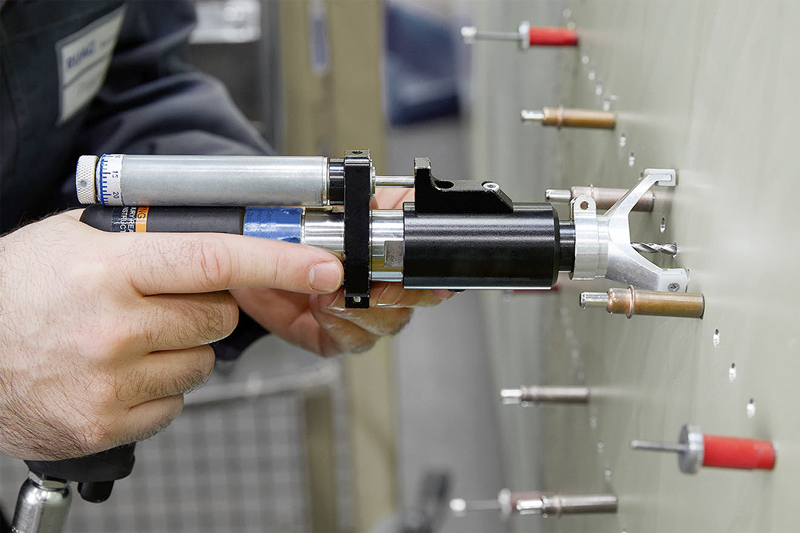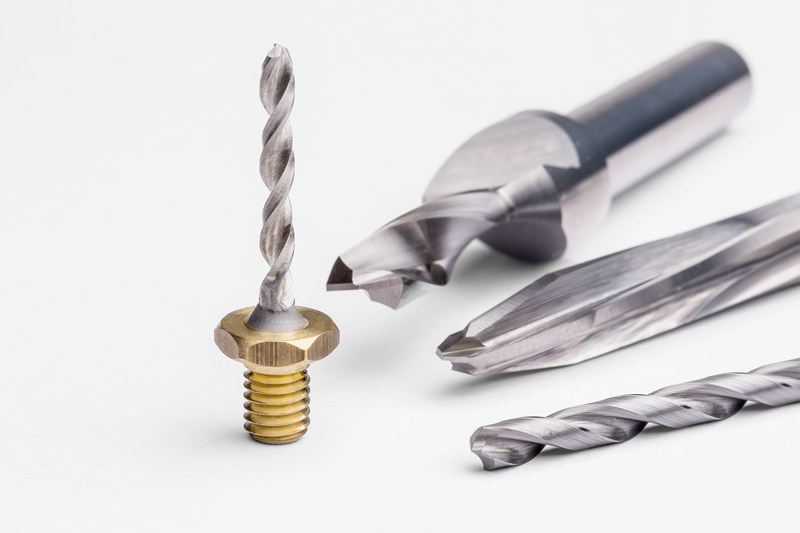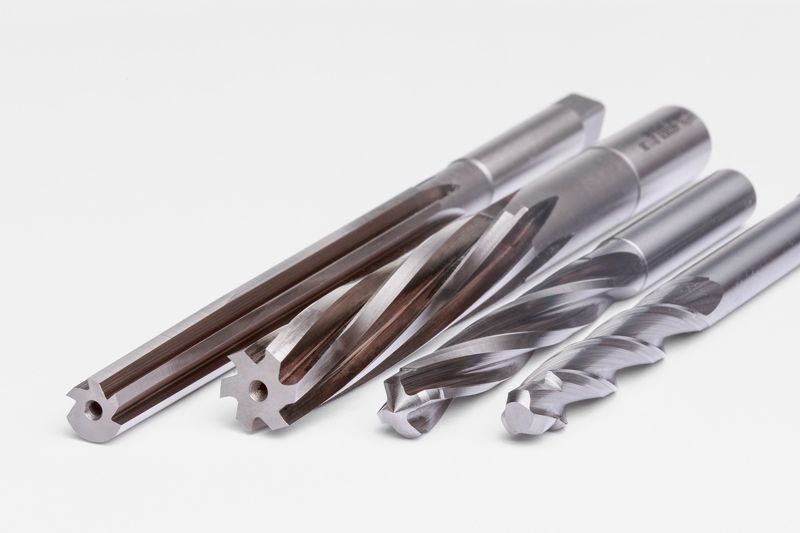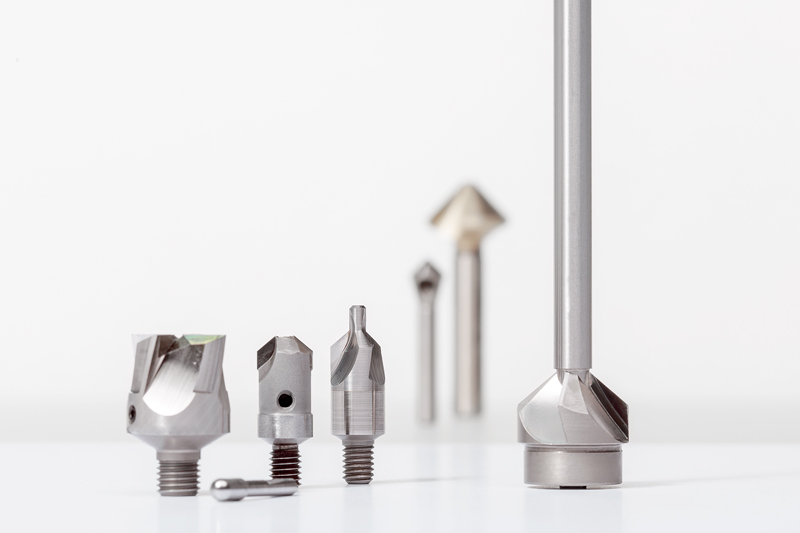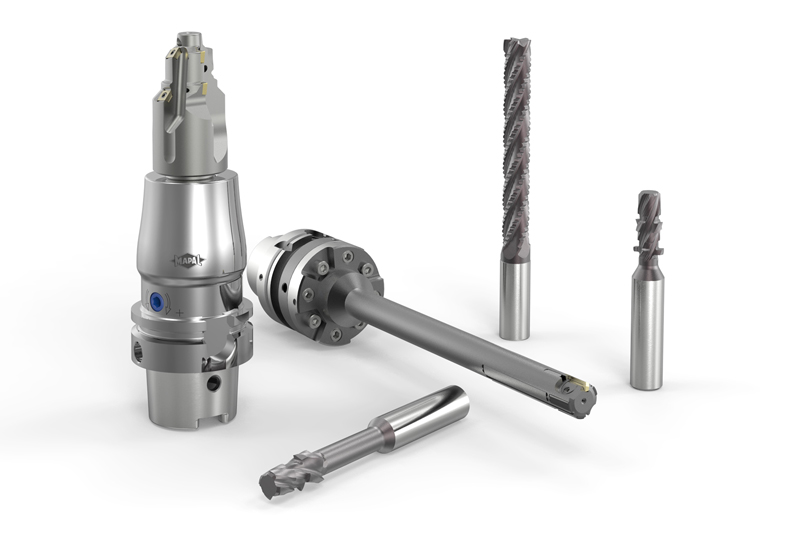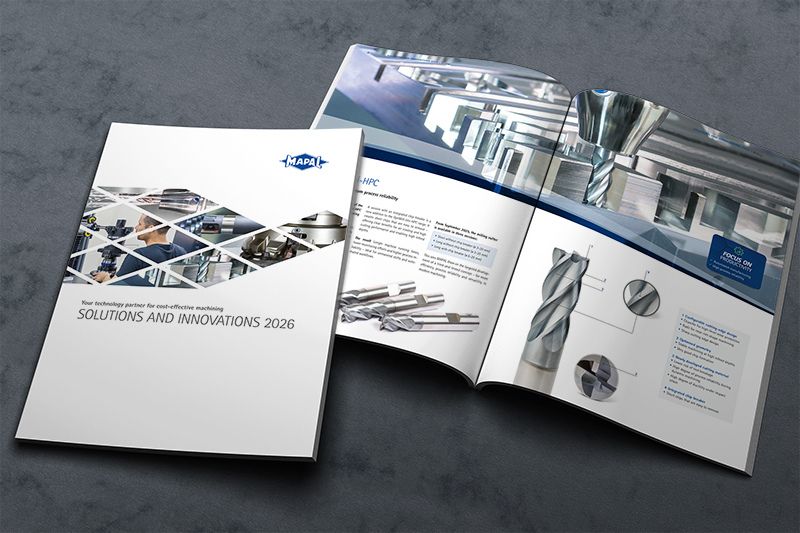Aerospace and Composites
In the aerospace industry, materials that are both high-strength and lightweight is the key. By making use of new combinations of materials, weight can be reduced further, strength and corrosion resistance can be increased and assembly can be simplified by using an integrated design. Whereas structural parts made of aluminium, titanium or high strength steel are machined on machining centres or gantry machines, final assembly machining is carried out by handheld machines, drill feed units or robots.
Part machining
In part manufacturing, the machining of parts is stationary, i.e. parts are cut in a machine in several clamping positions. While small to medium cubic parts can be machined on a machining centre, large parts require special gantry machines.
Solutions for final assembly
Even today, handheld machines are still used in the final assembly of aircraft, due to their size. For example, in final assembly lines (FAL), rivet holes are made in the outer skin of the aircraft’s fuselage. The tools are equipped with special guiding elements.
Latest news in the aerospace sector
-
24.10.2025
Portrait: MAPAL Centre of Competence PCD tools
With the Centre of Competence for PCD tools, MAPAL sets standards in customer service, technology, efficiency and sustainability.
-
15.10.2025
Successful tooling solutions from MAPAL increase productivity for customers.
Increasing customer productivity is at the heart of MAPAL’s standard processes for the industrial manufacturing of strategic components.
-
06.10.2025
Innovations and solutions of MAPAL
MAPAL presents its 2026 innovations and solutions in a comprehensive brochure.


